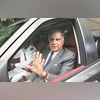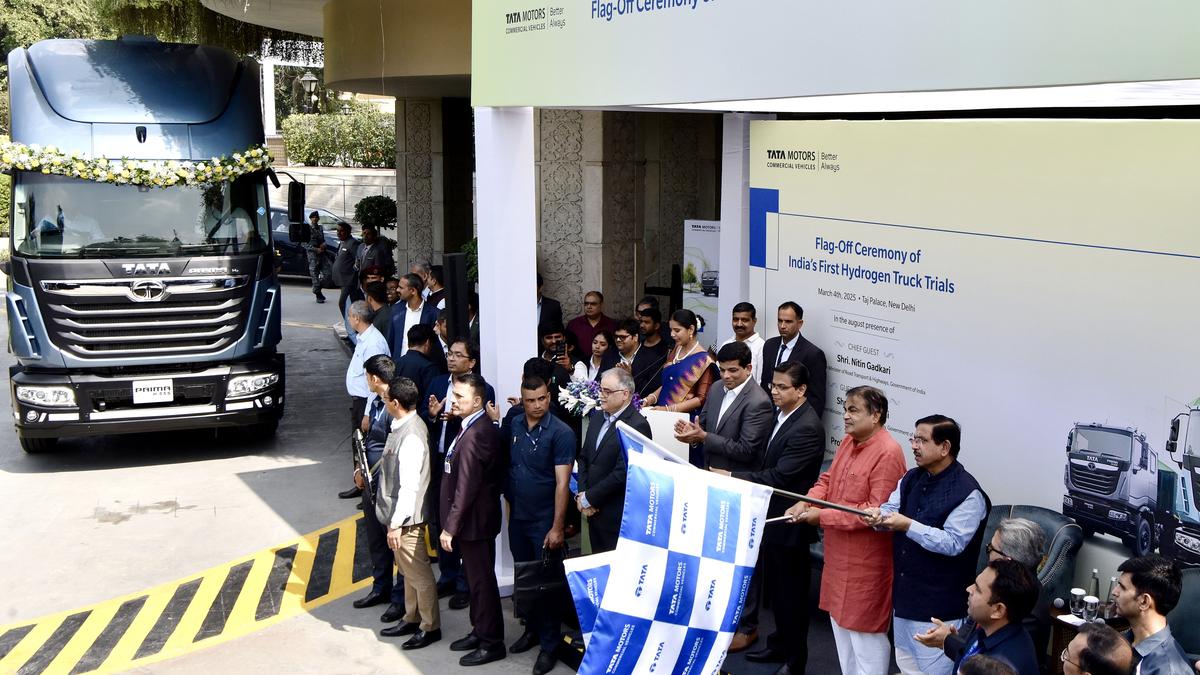)
A 2009 picture of Ratan Tata after addressing a news conference to announce the launch of Jaguar and Land Rover in India | Photo: Reuters
The defining feature of Ratan Tata’s tenure as chair of Tata Sons and the Tata Group was a series of high-profile overseas acquisitions that put the conglomerate — and corporate India — on the global map. These acquisitions transformed a once India-centric family enterprise into a global business group. However, before embarking on global expansion, Tata pruned and consolidated the group’s domestic portfolio, giving particular attention to ventures in the consumer space.
When Ratan Tata took over leadership from JRD Tata in 1991, the Tata Group was India’s largest and most diversified business conglomerate, with interests in nearly every sector except those reserved for the public sector. The group was dominated by industrial companies such as Tata Engineering & Locomotive Company (now Tata Motors), Tata Steel, the three Tata Electric Companies (Tata Power Company, Tata Hydro-Electric Supply Company, and Andhra Valley Power Supply Company), Associated Cement Companies (ACC), and Tata Chemicals. Together, these companies accounted for nearly three-quarters of the group’s combined revenues, profits, assets, and market capitalisation in 1990-91 (FY91).
However, Tata had also inherited a varied portfolio of consumer goods, which were, at the time, some of the largest in the private sector. In the early 1990s, Tata was among the top players in several consumer segments through companies like Lakmé Ltd (cosmetics and personal care), Tata Oil Mills (soaps), Goodlass Nerolac (paints), Merind (pharmaceuticals), Voltas (air conditioners and refrigerators), Titan Industries (watches), Tata Tea, Tata Coffee, and Tata Press (printing and publishing). The group was also a major player in computer hardware through its joint venture with IBM and in telecom equipment through Tata Telecom, a partnership with AT&T.
Despite their profitability and strong market positions, these ventures, with the exception of Merind, didn’t fit Tata’s vision for a globally competitive portfolio poised for growth in an era of globalisation and free capital flows. He foresaw challenges to the long-term viability of domestic consumer goods, given India’s relatively small consumer goods market and the entrenched position of multinationals in this space.
The pruning of the group’s sprawling portfolio was also necessitated by a sharp economic slowdown in India in the late 1990s and early 2000s. Between FY97 and FY01, group revenues had shrunk by 5 per cent, while net profits had plummeted by 85 per cent from Rs 2,344 crore in FY97 to merely Rs 354 crore in FY01.
Ratan Tata began rationalising the group’s portfolio to free up capital and managerial resources for growth in sectors where Tata had the potential to become a global leader. This slowdown also encouraged geographic expansion to reduce financial risk.
The first to go was TOMCO, the soap maker, which was sold to Hindustan Lever (now Hindustan Unilever). In 1997, the group exited the cosmetics and personal care business, selling the Lakmé brand to Hindustan Lever for Rs 200 crore. Lakmé Ltd was then renamed Trent, which launched its first Westside store in 1998, marking the group’s entry into organised retail.
The group’s divestment continued: in 1998, Voltas demerged its home appliance and refrigerator business into a joint venture with Electrolux, focusing instead on air conditioners, commercial refrigeration, and contract manufacturing. The same year, Tata exited the pharmaceutical sector by selling Merind to Wockhardt for Rs 95 crore, having previously divested Rallis India’s and Lakmé’s pharmaceutical divisions due to lack of scale and profitability.
In 1999, Tata sold its remaining 25.85 per cent stake in Goodlass Nerolac to Kansai Paint Co of Japan for Rs 98.56 crore, marking its exit from the paint business. The group further streamlined by exiting the computer hardware sector, ending its 50:50 joint venture with IBM. ACC, India’s second-largest cement producer at the time, also departed from Tata’s portfolio when Tata was unable to increase its stake; in 2000, the group sold its remaining shares to Ambuja Cement.
)
A bigger spread
While consolidating the domestic presence, Ratan Tata began expanding core companies globally. Tata Tea (now Tata Consumer Products) led the way, acquiring the UK’s Tetley in 2000 for $432 million, making Tata Tea the world’s second-largest branded tea company after Unilever. At the time of the acquisition, Tata Tea’s market capitalisation was around $500 million and it had reported net profits of $30 million in FY99.
In 2002, Tata Sons acquired a majority stake in the government-owned Videsh Sanchar Nigam Ltd (now Tata Communications) for Rs 2,599 crore, strengthening its position in the fast-growing telecom market.
In 2004, Tata Motors made its first international acquisition by buying the heavy vehicles unit of Daewoo Motors, becoming one of the world’s top truck makers. The following year, it acquired a 21 per cent stake in Spanish luxury bus maker Hispano Carrocera S.A. The pinnacle came in 2008, with the acquisition of Jaguar Land Rover for $2.3 billion, catapulting Tata Motors into the ranks of the world’s top automakers. Its revenue more than doubled the next year. Between 2004 and 2008, Tata Chemicals, Indian Hotels, and Tata Steel also pursued a string of acquisitions, most notably Tata Steel’s $12.2 billion acquisition of Corus in 2007 during the steel boom.
These acquisitions drove rapid growth in the group’s revenues and assets but led to increased borrowings and financial strain, which proved challenging during the post-2008 Lehman Crisis.The acquisitions led to rapid growth in the Tata Group’s revenues and assets between 2002 and 2009, but they came at the cost of a significant increase in borrowings and indebtedness. Between FY02 and FY08, the group’s combined revenues, profits, assets, and borrowings grew at compounded annual rates of 40.8 per cent, 76.9 per cent, 31.3 per cent, and 29.5 per cent, respectively. Consequently, the group’s balance sheet leverage ratio peaked at an all-time high of 1.84x in FY09, up from 1.21x in FY02 and a healthy 0.52x in FY05.
This financial strain was exacerbated when the 2008 financial crisis triggered a global recession and a sharp decline in corporate profits. The Tata Group’s combined net profits fell by 54 per cent in FY09, followed by an additional 7.4 per cent decline in the subsequent year. Similarly, the group’s combined net sales dropped by 6.7 per cent in FY10.
Tata Motors, Tata Steel, Indian Hotels, and Tata Global Beverages (now Tata Consumer) were hit the hardest by the aftershocks of the crisis and the debt-fuelled acquisitions. However, none of these companies faced existential threats, thanks to Tata Sons’ financial resources and its steadily growing dividend income from Tata Consultancy Services. Most of the group companies have since moved past these challenges and are once again on a path of growth.









![Best Weight Loss Supplements [2022-23] New Reports!](https://technologytangle.com/wp-content/uploads/2022/12/p1-1170962-1670840878.png)




